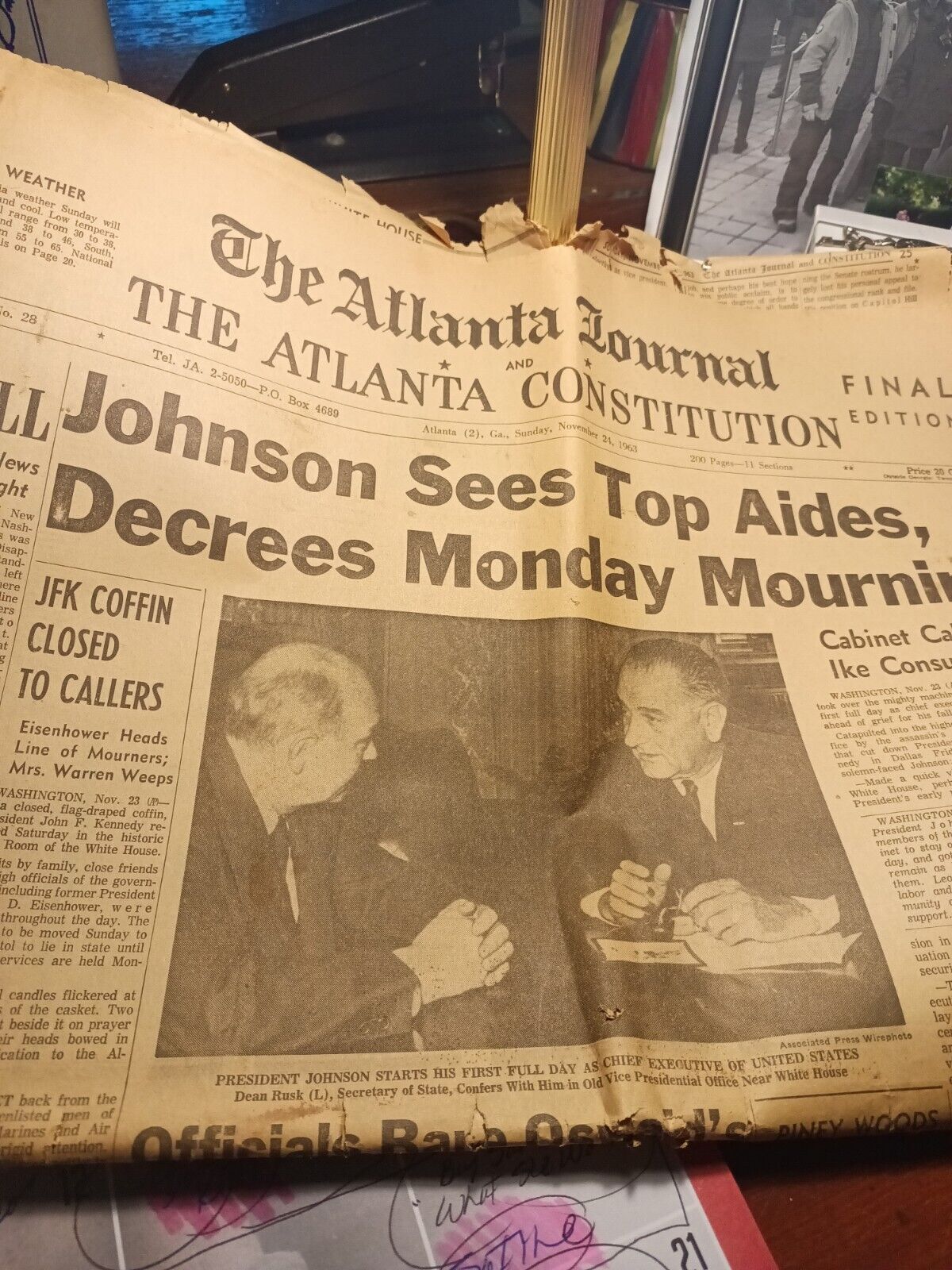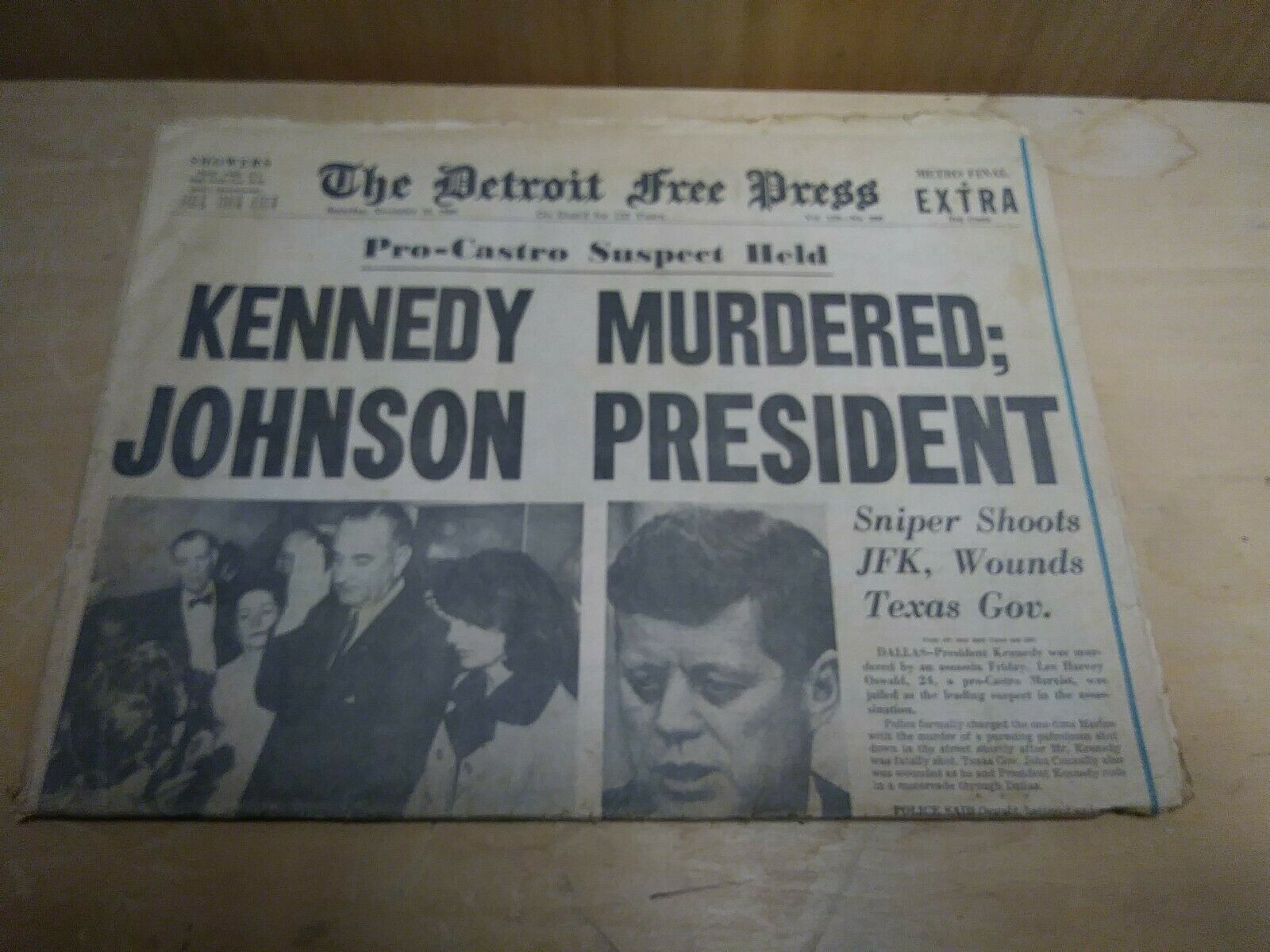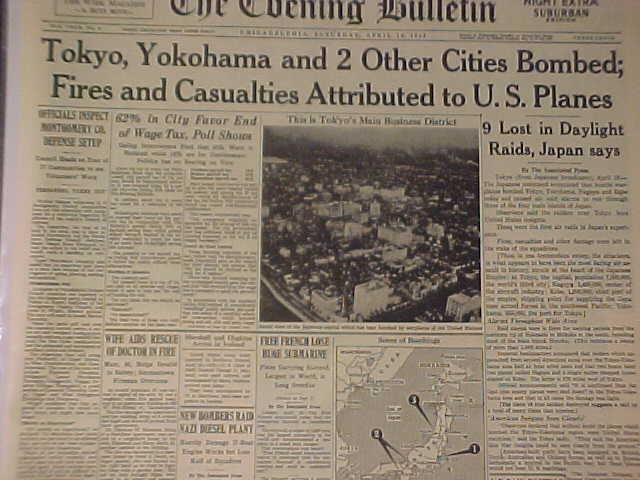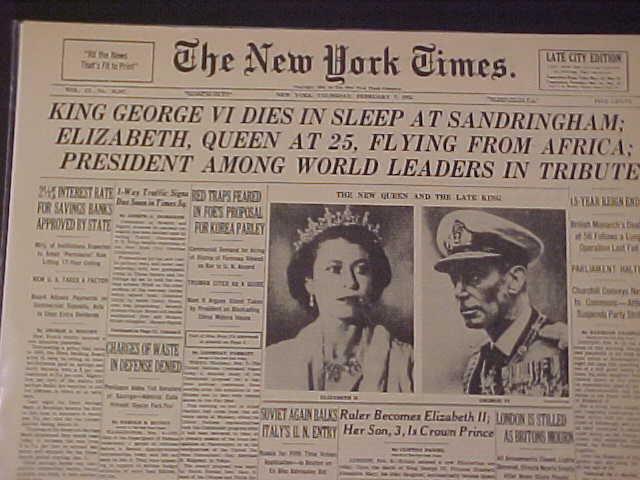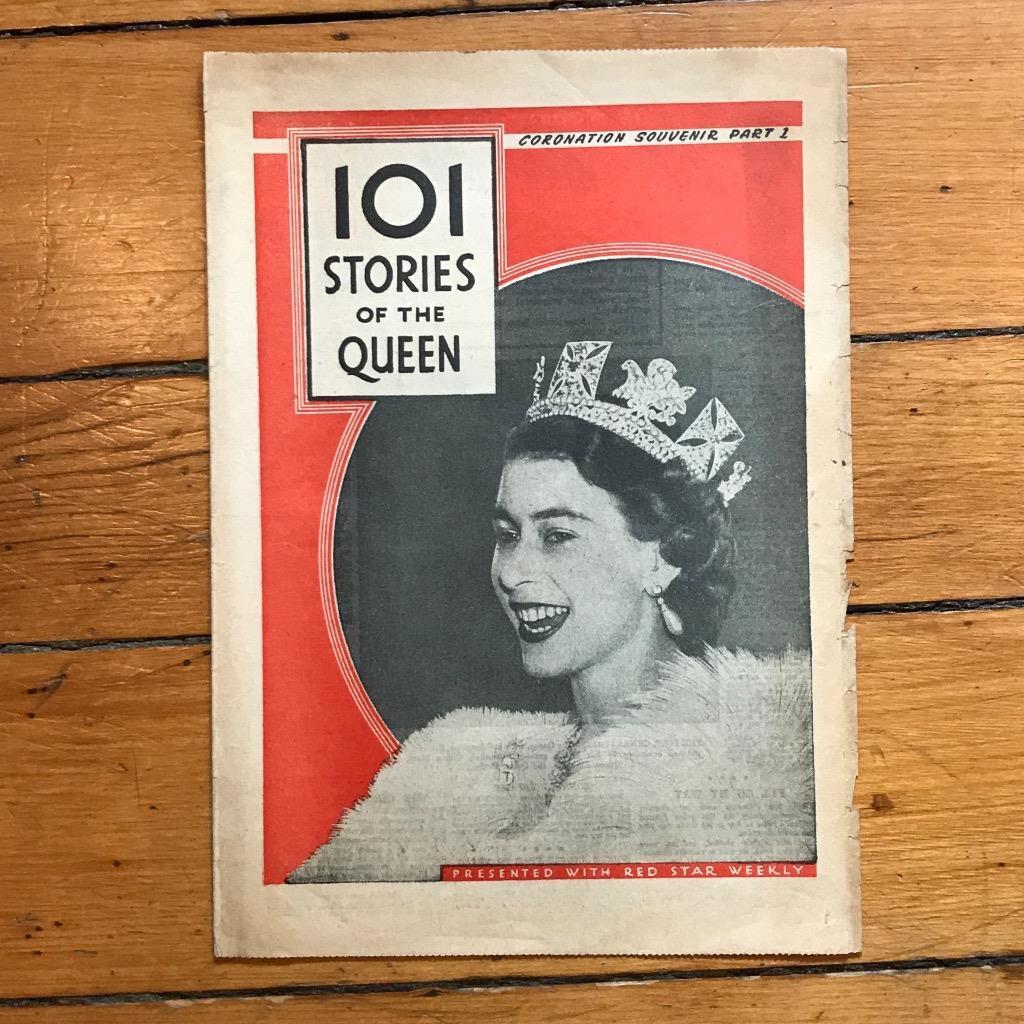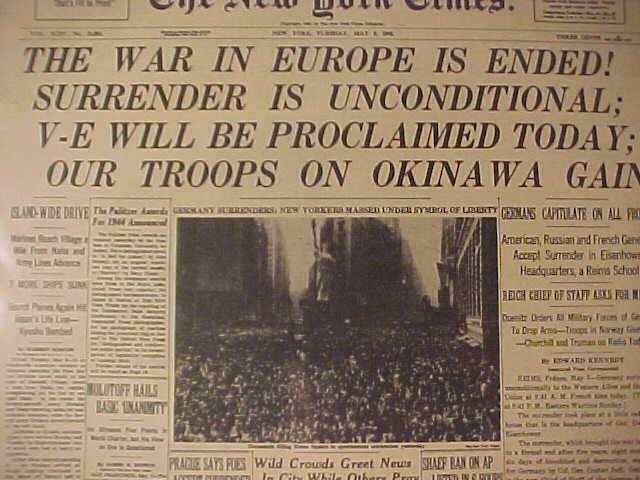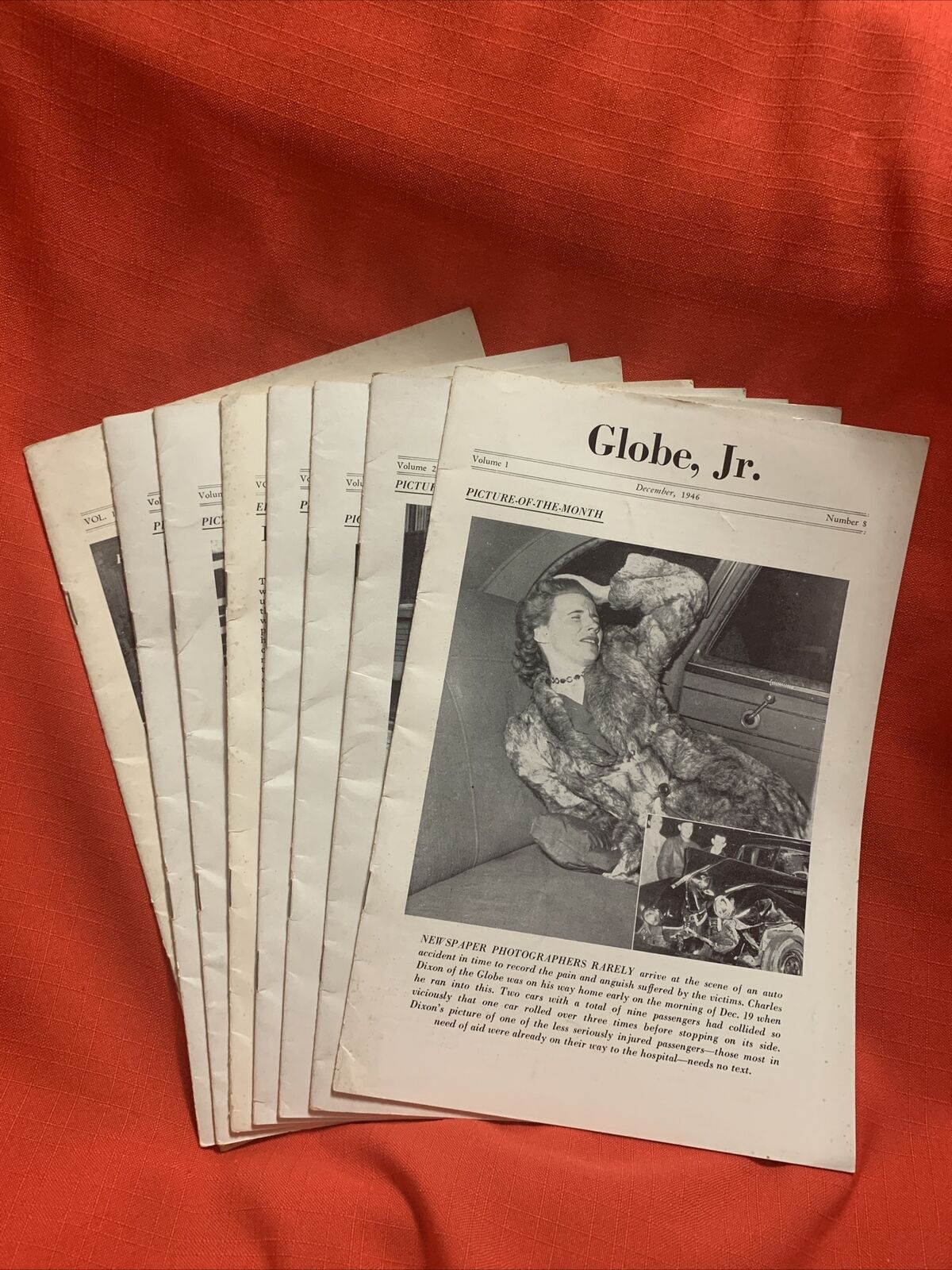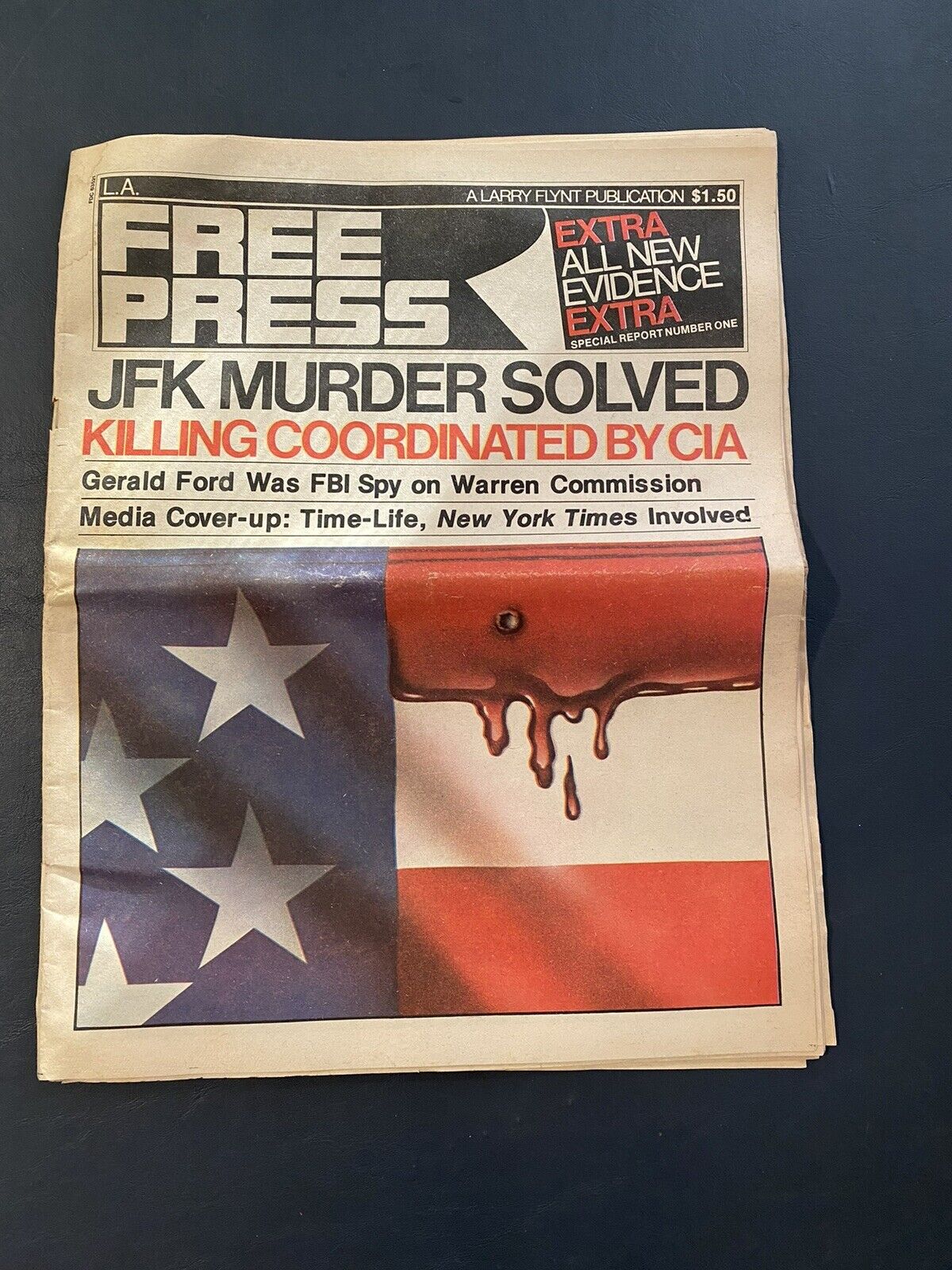-40%
7 1945 WW II hdlne newspapers GENERAL GEORGE PATTON Third Army tanks thru FRANCE
$ 31.67
- Description
- Size Guide
Description
7 1945 WW II hdlne newspapers GENERAL GEORGE PATTON Third Army tanks thru FRANCE7 1945 WW II headline newspapers GENERAL GEORGE PATTON 's Third Army tanks push thru FRANCE on to Nazi GERMANY
- inv # 8L-320
Please visit our
EBAY STORE
for THOUSANDS MORE HISTORICAL NEWSPAPERS for SALE or at auction
SEE PHOTO(s) - Lot of seven (7) COMPLETE ORIGINAL WW II NEWSPAPERs, the
Mobile Register
(AL) dated in 1945: March 26, 31; April 4, 5, 6, 7, and 14, 1945. This lot of 7 original newspapers contains headlines and long detailed coverage of
US Army General GEORGE PATTON and his Third Army punching through France
to Nazi Germany near the end of the War in Europe.
George Smith Patton Jr. (November 11, 1885 – December 21, 1945) was a general in the United States Army who commanded the Seventh United States Army in the Mediterranean theater of World War II, and the Third United States Army in France and Germany after the Allied invasion of Normandy in June 1944.
Patton entered combat during the Pancho Villa Expedition of 1916, the United States' first military action using motor vehicles. He fought in World War I as part of the new United States Tank Corps of the American Expeditionary Forces: he commanded the U.S. tank school in France, then led tanks into combat and was wounded near the end of the war. In the interwar period, Patton became a central figure in the development of the army's armored warfare doctrine, serving in numerous staff positions throughout the country. At the United States' entry into World War II, he commanded the 2nd Armored Division.
Patton led U.S. troops into the Mediterranean theater with an invasion of Casablanca during Operation Torch in 1942, and soon established himself as an effective commander by rapidly rehabilitating the demoralized II United States Corps. He commanded the U.S. Seventh Army during the Allied invasion of Sicily, where he was the first Allied commander to reach Messina. There he was embroiled in controversy after he slapped two shell-shocked soldiers, and was temporarily removed from battlefield command. He was assigned a key role in Operation Fortitude, the Allies' military deception campaign for Operation Overlord.
At the start of the Western Allied invasion of France, Patton was given command of the Third Army, which conducted a highly successful rapid armored drive across France. Under his decisive leadership, the Third Army took the lead in relieving beleaguered American troops at Bastogne during the Battle of the Bulge, after which his forces drove deep into Nazi Germany by the end of the war.
By February, the Germans were in full retreat. On February 23, 1945, the U.S. 94th Infantry Division crossed the Saar River and established a vital bridgehead at Serrig, through which Patton pushed units into the Saarland. Patton had insisted upon an immediate crossing of the Saar River against the advice of his officers. Historians such as Charles Whiting have criticized this strategy as unnecessarily aggressive.
Once again, Patton found other commands given priority on gasoline and supplies. To obtain these, Third Army ordnance units passed themselves off as First Army personnel and in one incident they secured thousands of gallons of gasoline from a First Army dump. Between January 29 and March 22, the Third Army took Trier, Coblenz, Bingen, Worms, Mainz, Kaiserslautern, and Ludwigshafen, killing or wounding 99,000 and capturing 140,112 German soldiers, which represented virtually all of the remnants of the German First and Seventh Armies. An example of Patton's sarcastic wit was broadcast when he received orders to bypass Trier, as it had been decided that four divisions would be needed to capture it. When the message arrived, Trier had already fallen. Patton rather caustically replied: "Have taken Trier with two divisions. Do you want me to give it back?"
The Third Army began crossing the Rhine River after constructing a pontoon bridge on March 22, two weeks after the First Army crossed it at Remagen, and Patton slipped a division across the river that evening. On March 26, 1945, Patton sent Task Force Baum, consisting of 314 men, 16 tanks, and assorted other vehicles, 50 miles behind German lines to liberate the prisoner of war camp OFLAG XIII-B, near Hammelburg. Patton knew that one of the inmates was his son-in-law, Lieutenant Colonel John K. Waters. The raid was a failure, and only 35 men made it back; the rest were either killed or captured, and all 57 vehicles were lost. Patton reported this attempt to liberate Oflag XIII-B as the only mistake he made during World War II. When Eisenhower learned of the secret mission, he was furious. Patton later said he felt the correct decision would have been to send a Combat Command, which is a force about three times larger.
By April, resistance against the Third Army was tapering off, and the forces' main efforts turned to managing some 400,000 German prisoners of war. On April 14, 1945, Patton was promoted to general, a promotion long advocated by Stimson in recognition of Patton's battle accomplishments during 1944. Later that month, Patton, Bradley, and Eisenhower toured the Merkers salt mine as well as the Ohrdruf concentration camp, and seeing the conditions of the camp firsthand caused Patton great disgust. Third Army was ordered toward Bavaria and Czechoslovakia, anticipating a last stand by Nazi German forces there. He was reportedly appalled to learn that the Red Army would take Berlin, feeling that the Soviet Union was a threat to the U.S. Army's advance to Pilsen, but was stopped by Eisenhower from reaching Prague, Czechoslovakia, before V-E Day on May 8 and the end of the war in Europe.
In its advance from the Rhine to the Elbe, Patton's Third Army, which numbered between 250,000 and 300,000 men at any given time, captured 32,763 square miles of German territory. Its losses were 2,102 killed, 7,954 wounded, and 1,591 missing. German losses in the fighting against the Third Army totaled 20,100 killed, 47,700 wounded, and 653,140 captured.
During the Allied occupation of Germany, Patton was named military governor of Bavaria, but was relieved for making aggressive statements towards the Soviet Union and trivializing denazification. He commanded the United States Fifteenth Army for slightly more than two months. Severely injured in an auto accident, he died in Germany twelve days later, on December 21, 1945.
Very good condition. This listing includes the 7 complete entire original newspapers, NOT just a clipping or a page of them. STEPHEN A. GOLDMAN HISTORICAL NEWSPAPERS stands behind all of the items that we sell with a no questions asked, money back guarantee. Every item we sell is an original newspaper printed on the date indicated at the beginning of its description. U.S. buyers pay USPS Media Mail postage which includes waterproof plastic and a heavy cardboard flat to protect the purchased item from damage in the mail. International postage is quoted when we are informed as to where the package is to be sent. We do combine postage (to reduce postage costs) for multiple purchases sent in the same package.
We list thousands of rare newspapers with dates from 1570 through 2004 on Ebay each week. This is truly SIX CENTURIES OF HISTORY that YOU CAN OWN!
Stephen A. Goldman Historical Newspapers has been in the business of buying and selling historical newspapers for over 50 years. Dr. Goldman is a consultant to the Freedom Forum Newseum and a member of the American Antiquarian Society. You can buy with confidence from us, knowing that we stand behind all of our historical items with a 100% money back guarantee. Let our 50+ years of experience work for YOU ! We have hundreds of thousands of historical newspapers (and their very early precursors) for sale.
Stephen A. Goldman Historical Newspapers
has been in the business of buying and selling historical newspapers for over 50 years. We are located in the charming Maryland Eastern Shore town of OXFORD, Maryland.
Dr. Goldman is a consultant to the Freedom Forum Newseum and a member of the American Antiquarian Society. You can buy with confidence from us, knowing that we stand behind all of our historical items with a 100% money back guarantee. Let our 50+ years of experience work for YOU ! We have hundreds of thousands of historical newspapers (and their very early precursors) for sale.
We invite customer requests for historical newspapers that are not yet located in our extensive Ebay listing of items. With an inventory of nearly a million historical newspapers (and their early precursors) we are likely have just the one
YOU
are searching for.
WE ARE ALSO ACTIVE BUYERS OF HISTORICAL NEWSPAPERS, including large and small personal collections, bound volumes, significant individual issues, or deaccessions from libraries and historical societies. IF YOU WANT TO SELL, WE WANT TO BUY !!!
Powered by SixBit's eCommerce Solution










